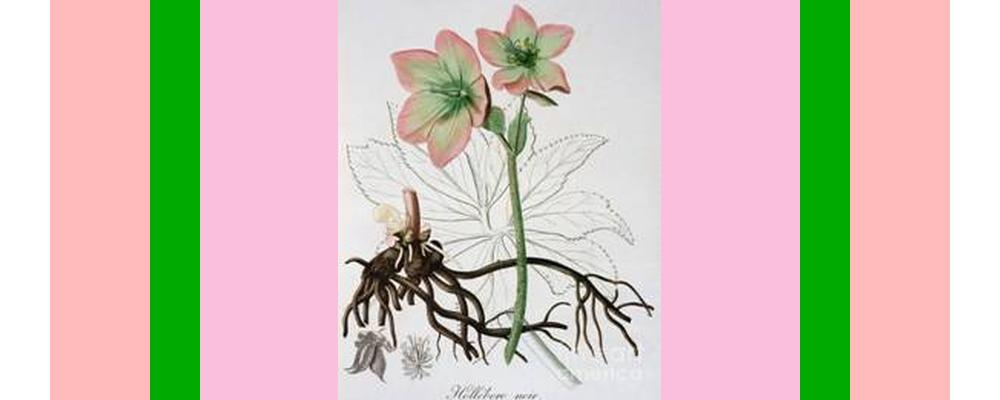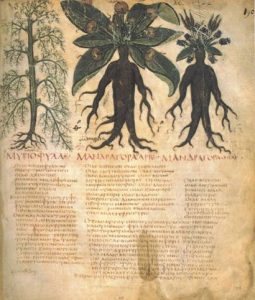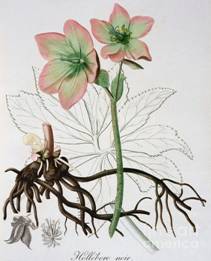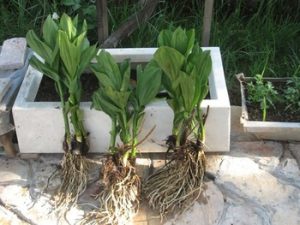Materia Medica is one of those things that are absolutely essential for a Homeopath, and one can’t imagine what was it like before its creation, or better before the creation of the original Materia Medica. The first homeopathic Materia Medica was, of course, Hahnemann’s Materia Medica Pura, but what was it based on, and how did Hahnemann choose the medicinal substances for his homeopathic provings?
Every Materia Medica is based on the illustrated book “De Materia Medica” by ancient Greek physician Pedanius Dioscorides, who wrote this book between 50 and 70 AD, so almost 2000 years ago. Ever since, it was one of the cornerstones of Roman, and later Christian and Islamic medicine, copied and used for almost two millennia, even fairly recently. Sir Arthur Hill saw a monk on Mount Athos still using a copy of Dioscorides to identify plants in 1934.
In this book, we can find many names of the commonly used homeopathic remedies like aconite, aloe, colocynth, colchicum, henbane, opium, sepia etc. In this very long period the names of some plants have been mixed or forgotten, so it is important to understand how the ancient Greeks themselves named the plants. We can see in Dioscorides Materia Medica how a part of the plant, that was most used and respected was the root. Ancient Greeks believed that the essence of the plant is in its root. The most famed plant for its root was, of course, the Mandrake with a very nice image in this book:
In this image, the root looks just like a human figure, and only when it had that shape was it considered to be good for medicinal purposes. So, for mandrake the shape of the plant’s root was crucial, while for other plants it was the colour of the root that mattered. The importance of the root colour may be well understood through the example of black and white hellebore. The name Helleborus niger, Greek Elleboros melas – black hellebore means that it’s root is black, and the blacker it was, the plant was considered more potent.
In antiquity, two kinds of hellebore were recognized: black hellebore, Helleborus niger, which included various species of Helleborus that have black roots, and white hellebore, that we now call Veratrum album, with white roots.
Hellebourus niger Veratrum album (Helleborus album)
Black hellebore was used by the ancients to treat paralysis, gout and particularly insanity, among other diseases. In Dioscorides we find the following indications for use of this remedy:
“It is thought that one Melampus, a goatherd, purged and cured the mad daughters of Proteus (king of Argos) with it. It purges the intestines from above, driving out phlegm and bile, given alone (or with scammony and a teaspoonful or thirty grains of salt). It is also boiled with lens [lentils] and broths that are taken for purging. It is good for epilepsy, depression, delirium, arthritis and paralysis. Given in a pessary it expels the menstrual flow, is an abortifacient, and cleans fistulas [ulcers] (put into them and taken away after the third day). Similarly, it is put into the ears for those who are hard of hearing, leaving it alone for two or three days. Rubbed on with frankincense, or wax, pitch, and oil cedrinum [cedar], it also heals parasitic skin diseases. Applied with vinegar it heals vitiligo [type of leprosy], impetigo, and leprosy. Boiled with vinegar and used as a mouthwash, it soothes toothache. It is also put into corrosive medicines. With barley meal and wine, it is a good poultice for dropsy.
Planted near the roots of vines it makes the wine made from them purgative.
They sprinkle it around houses thinking it preserves them from evil spirits. When they dig it they stand praying to Apollo and Aesculapius, observing the eagle’s flight, for they say he flies that way not without danger to them. For the bird causes death if one is seen digging hellebore; and one must dig it with swiftness because inhaling it causes a headache. To prevent this, those who dig it eat garlic and drink wine, so they are made less liable to be hurt. It is pithy, as is the white hellebore.
The Romans call it veratrum nigrum, and the Dacians, prodiorna”
In ancient Greece, during the Siege of Kirrha in 585 BC, hellebore was reportedly used by the Greek besiegers to poison the city’s water supply. The defenders were subsequently so weakened by diarrhea and heart conditions, that they were unable to defend the city from assault.
In pharmacology and toxicology, throughout 19th and first half of the 20th century Helleborus niger was described as toxic, causing tinnitus, vertigo, stupor, thirst, a feeling of suffocation, swelling of the tongue and throat, emesis and catharsis, bradycardia (slowing of the pulse), and finally collapse and death from cardiac arrest. Research in the 1970s, however, showed that the roots of Helleborus niger do not contain the cardiotoxic compounds helleborin, hellebrin, and helleborein that are responsible for the lethal reputation of black hellebore. It seems that earlier studies may have used a commercial preparation (Hellebori radix) containing a mixture of material from other species such as Helleborus viridis, Helleborus odorus and other Helleborus speces with black root.
In “Encyclopaedia Britannica” vol. IV, published in 1810, in the section on Botany, page 210, the author stated:
“It does not however appear, that our black hellebore acts with so much violence as that of the ancients, whence many have supposed it to be a different plant; and indeed, the descriptions which the ancients have left us of their hellebore, do not agree to any of the forts usually taken notice of by modern botanists.”
A comparative analysis of all the Hellebore species in western Balkan region, including Helleborus niger (subspecies niger), by Petricic et al. (1971) has showed that the highest concentration of helebrine is present in Helleborus odorus (0,55%).
Hahneman says in the introduction to Helleborus niger, in his Materia Medica Pura:
“When the morbid symptoms it can produce shall have been more completely ascertained, we shall then be able to see what the diseases were for the cure of which at their sanatory resorts the Greeks obtained such renown, for the plant they employed for this purpose was a species with pale red flowers closely allied to our hellebore.”, and also “I myself gathered the root which I used for my trials, and hence am convinced of its genuineness”. Since Hahnemann at the time lived in Torgau, north-eastern Germany, and he said that he himself gathered the plant, a local species of hellebore, as he said, “closely related to ancient Greek hellebore”, it is highly unlikely that he used the Helleborus niger niger, that can only be found in the far south of Germany, but a local species of hellebore, probably Helleborus viridis.
In the Balkans, the hellebore species with most similar composition of pharmacoactive substances to Helleborus viridis is Helleborus odorus. These species have very high concentration of helebrine, helleborin and helleborein, unlike Helleborus niger, and their effect is very close to those described by the authors in early ancient Greece, the original black hellebore. It seems that Hahnemann was very fortunate to have a local hellebore species, Helleborus viridis, that was most similar to ancient Helleborus niger, and that Hahnemann’s Helleborus niger could be in fact modern Helleborus viridis, or in the Balkans Helleborus odorus.
Helleborus Viridis Helleborus Odorus
Until the 1970s, even scientists used a commercial preparation (Hellebori radix), containing a mixture of material from different species of Hellebore, so some homeopathic pharmacies may have also used this preparation.
It is also interesting that the ancient Greeks have learned about many of the medicinal plants from their northern neighbours Thracians and Dacians, probably including hellebore, because he gives us also it’s Dacian name. Ancient Greeks had great respect for Thracian and Dacian medicine-men, and we can see that in many classical Greek texts including Plato’s Dialogues. In Dacian and Thracian lands the most common hellebore species is Helleborus odorus. The greatest concentration of hellebore species occurs in the Balkans, so there may be more candidates for it, but with its dark black root, it is most likely that the original Helleborus niger of antiquity, the one the ancient Greeks learned about from Dacian and Thracian medicine-men, is in fact the plant we now call Helleborus odorus.
We may come to the conclusion, that Helleborus viridis and Helleborus odorus are very similar, both having very high concentration of helebrine, helleborin and helleborein, and they even look very similar (as you can see on the pictures above). Hellaborus viridis may be the Hahnemann’s Helleborus niger (Hell), that he used for proving and that we read about in Materia Medica Pura. Their effects are very close to those described by the authors in early ancient Greece, the original black hellebore, while the modern botanically classified Hellaborus niger doesn’t have most of these effects.
So, the modern botanically classified Hellaborus niger, is most probably not the plant Hahneman used to make the homeopathic remedy Hellaborus niger – it‘s much more likely that was Hellaborus viridis, a local hellebore species near Torgau, northeast Germany, where he lived in that period.












Interesting article – thank you for sharing.